Imagine stepping into your kitchen, the air filled with the invigorating scent of fresh mint, ready to be plucked to elevate your culinary creations or brew a soothing tea. Whether you are just starting your gardening journey or have been nurturing plants for years, growing mint indoors is a delightful endeavor that promises both sensory joy and practical rewards.
For beginners, this guide is your ticket to cultivating a lush, aromatic oasis right on your windowsill, while seasoned gardeners will discover new techniques to optimize their indoor mint garden. By following these expert tips, you’ll gain confidence in your ability to nurture vibrant, healthy mint plants that will thrive indoors, regardless of the season.
From enhancing your dishes to crafting homemade beauty products, the uses of mint are as versatile as they are exciting. Embrace the satisfaction of growing this hardy, fragrant herb, knowing you have the know-how to succeed with ease and enjoy the myriad of benefits it brings to your home.
Choose a Sunny Windowsill Spot
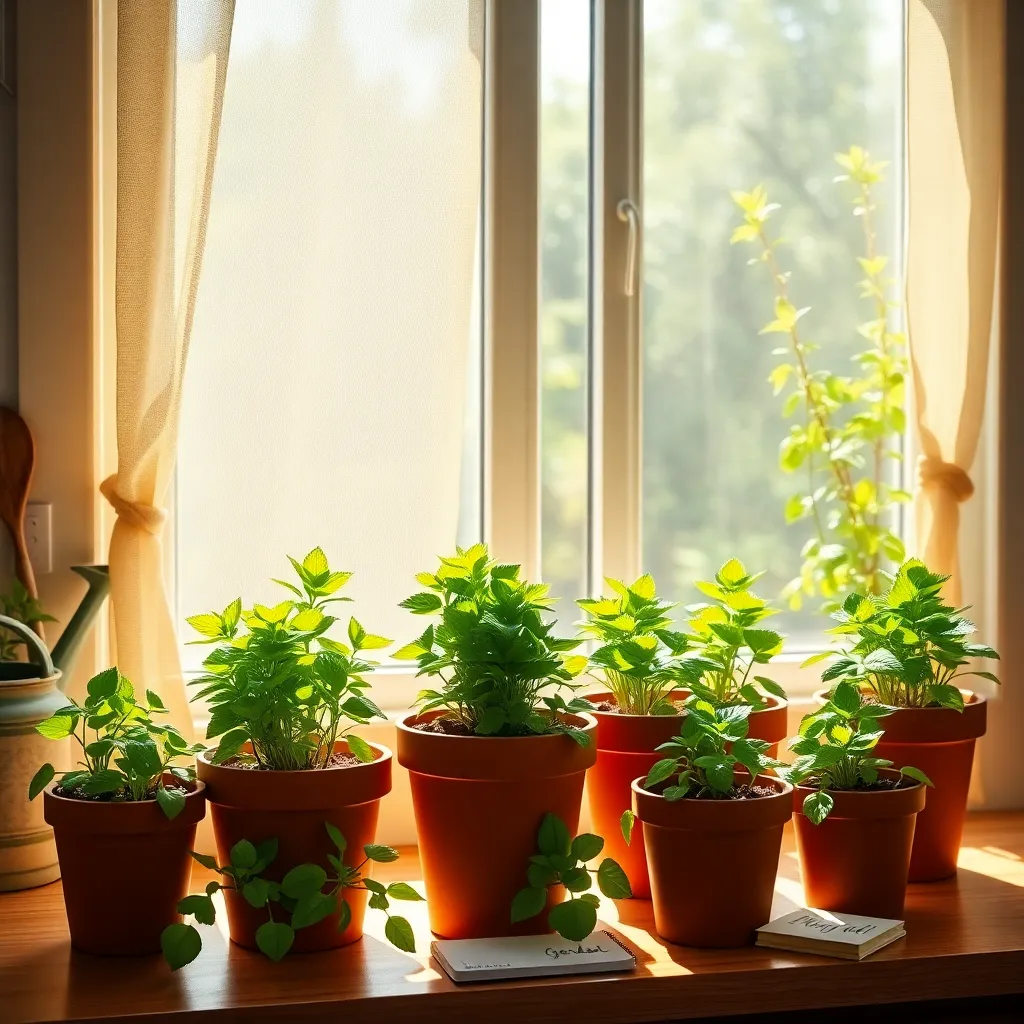
Finding the right windowsill spot is crucial for growing healthy mint indoors. Choose a location that receives at least six hours of direct sunlight daily to ensure your mint thrives.
Consider windows facing south or west, as they typically offer the best light exposure. If natural light is insufficient, supplement with a full-spectrum grow light to mimic sunlight conditions.
It’s important to ensure that the windowsill you choose is free from cold drafts, which can hinder mint growth. A steady temperature between 65°F to 70°F is ideal for maintaining a healthy plant.
For those living in regions with less sunlight during winter, rotating the pot every few days can help maintain even growth. This practice prevents the plant from leaning towards the light source, ensuring a balanced and robust mint plant.
Water When Soil Feels Dry
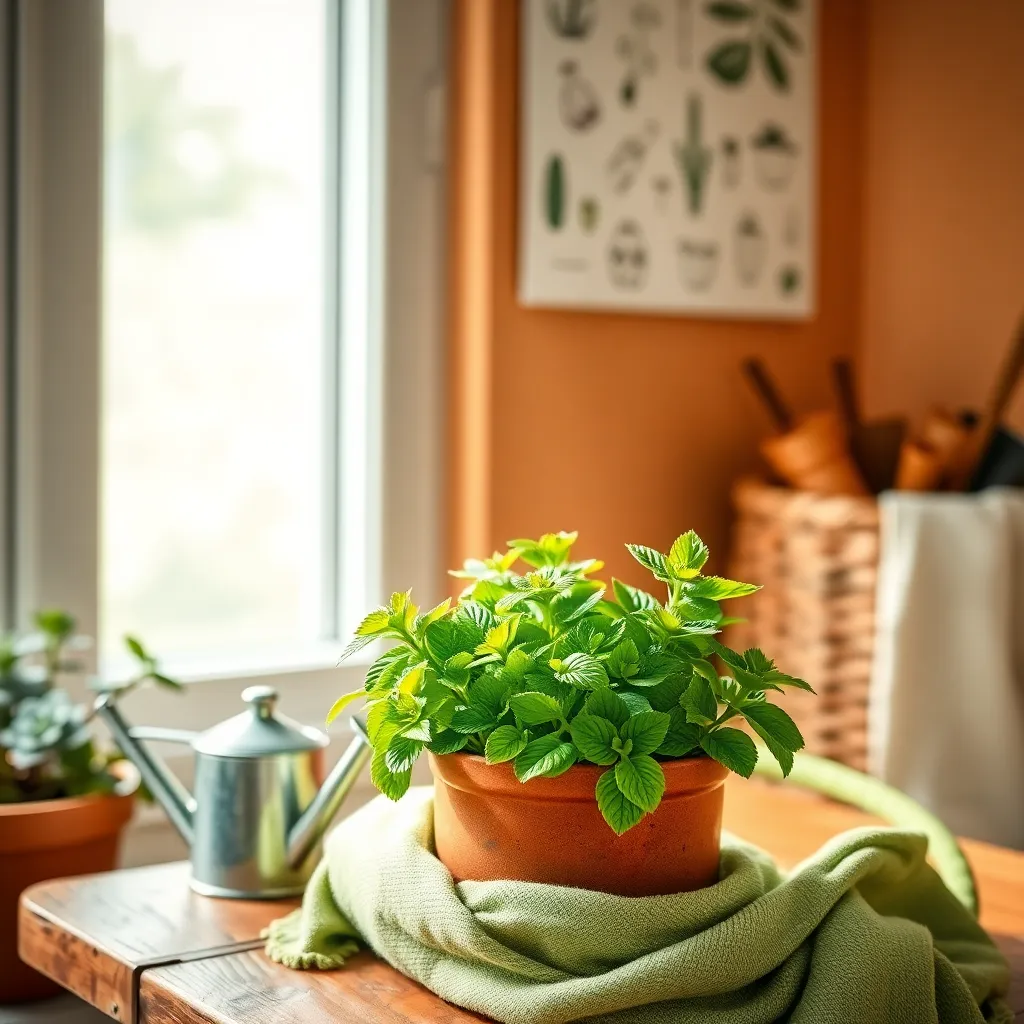
One of the most crucial aspects of growing fresh mint indoors is to ensure the plant receives the right amount of water. Mint thrives when its soil is kept consistently moist, but not waterlogged, which means watering should be done when the top inch of soil feels dry to the touch.
To test soil moisture, simply insert your finger into the soil up to the first knuckle. If the soil feels dry at that depth, it’s time to water your mint plant. Overwatering can lead to root rot, so it’s important to avoid letting the pot sit in excess water.
For beginner gardeners, using a moisture meter can be a helpful tool to avoid over or under-watering. These devices provide an accurate reading of soil moisture levels, ensuring that you water only when necessary. Advanced gardeners can gauge moisture by the weight of the pot, as a dry pot will feel significantly lighter than a well-watered one.
Consider the type of soil you use, as it plays a significant role in water retention. A high-quality potting mix with good drainage properties is ideal for mint, as it helps prevent water from pooling at the roots. Adding perlite or sand to your potting mix can improve drainage and aeration, enhancing the overall growing conditions for your mint plant.
Use a Pot with Drainage
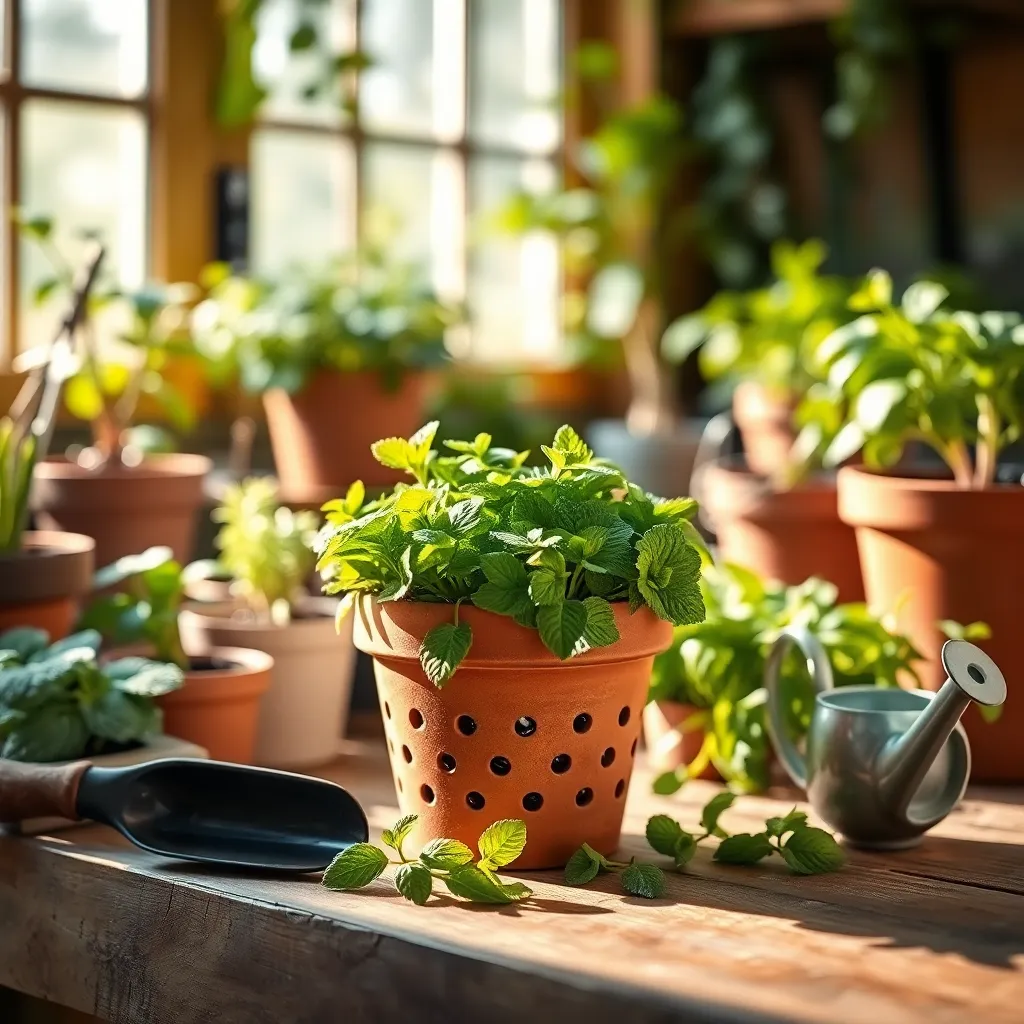
Using a pot with proper drainage is essential for growing healthy mint indoors. Without adequate drainage, water can accumulate at the bottom, leading to root rot, which is a common issue for potted plants like mint.
Choose a pot with one or more drainage holes at the bottom to ensure excess water can escape. This simple step helps maintain the right moisture balance in the soil, which is crucial for mint’s optimal growth.
For beginners, selecting a pot made from terracotta or ceramic can naturally wick away moisture, offering an extra layer of protection against overwatering. More advanced gardeners might opt to add a layer of pebbles or broken pottery at the bottom to further improve drainage.
When planting mint, use a light, well-draining potting mix that includes materials like perlite or coarse sand. These ingredients enhance aeration and prevent the soil from becoming compacted, which is vital for mint’s root health.
Prune Regularly for Bushy Growth
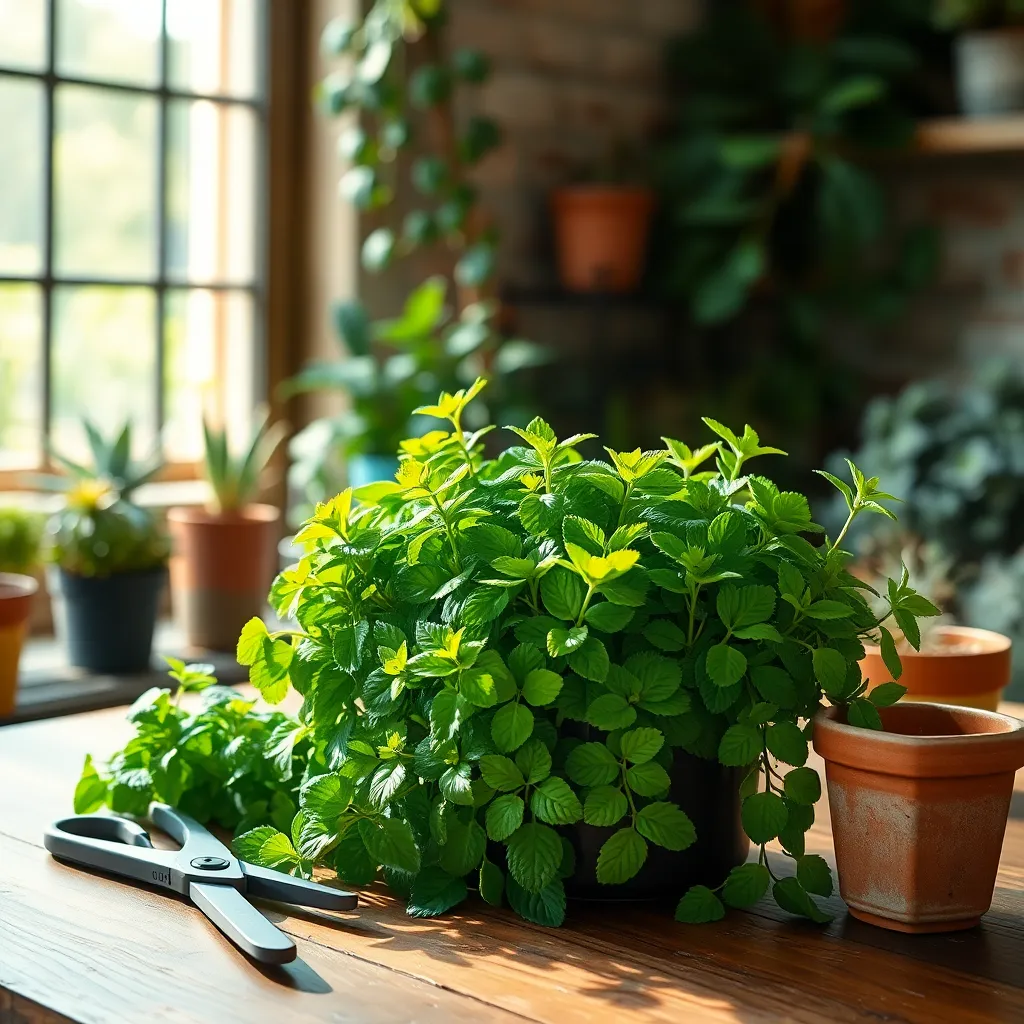
Regular pruning is essential if you want your indoor mint to thrive and grow bushy. By cutting back the stems, you encourage the plant to produce more shoots, leading to a fuller appearance.
When pruning mint, aim to cut just above a leaf node, as this is where two new stems will emerge. This simple technique will double the growth at each cut, making your mint look lush and vibrant.
Use clean, sharp scissors or pruning shears to avoid damaging the plant. Dull tools can crush the stems, making them more susceptible to disease.
For beginners, prune your mint every few weeks, removing about a third of the plant. More experienced gardeners might experiment with a more frequent trimming schedule to maximize fullness.
Ensure that your mint receives adequate light and water, as these are crucial for new growth after pruning. A south-facing window is ideal, providing the right balance of light and warmth.
Additionally, fertilize your mint every 4-6 weeks to support the energy it needs for regrowth. Use a balanced, water-soluble fertilizer to keep the plant healthy and productive.
Fertilize Monthly with Liquid Feed
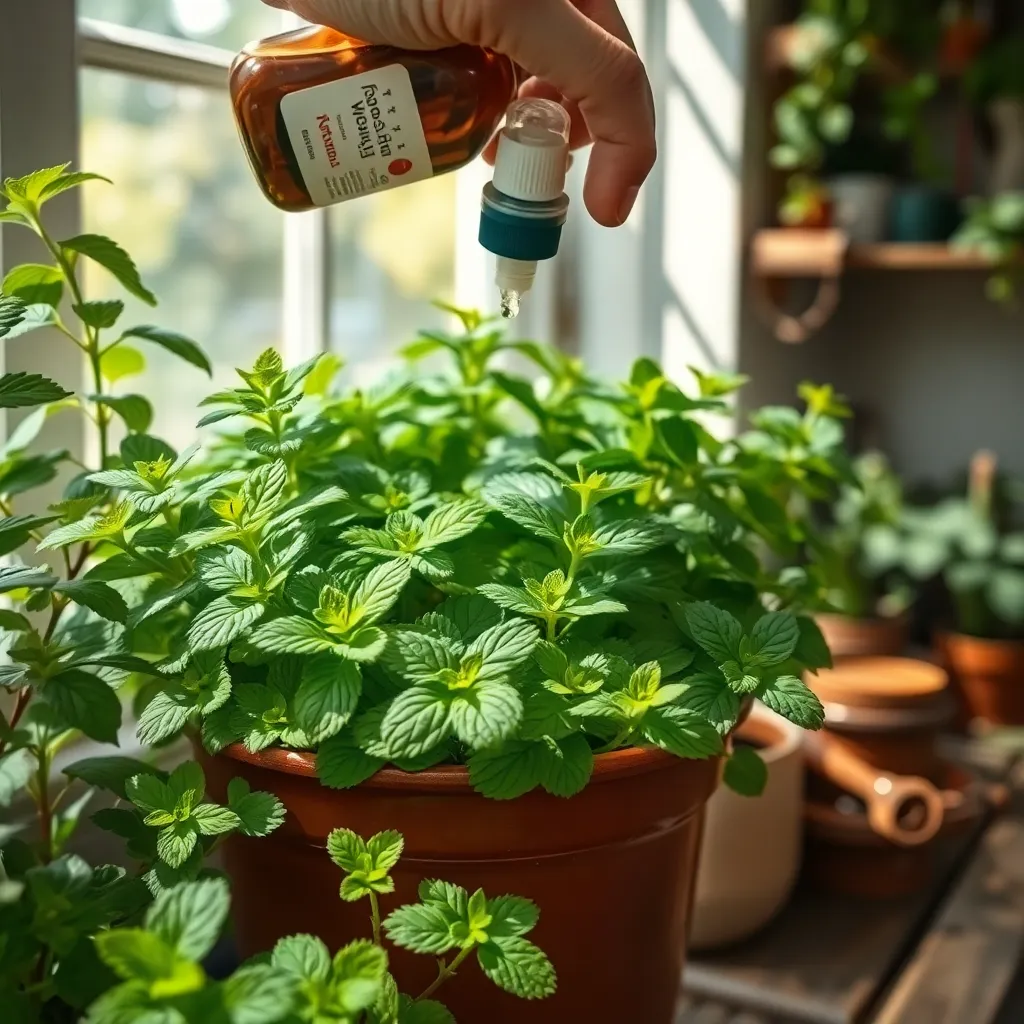
To keep your indoor mint thriving, feeding it monthly with a liquid fertilizer is essential. Choose a balanced liquid fertilizer, such as a 10-10-10 or 20-20-20 formula, to ensure your mint receives the nutrients it needs for robust growth.
Before applying the fertilizer, dilute it to half the recommended strength to avoid over-fertilizing, which can harm the plant. It’s important to apply the liquid feed during the plant’s active growing season, typically from spring to early fall, when it can best utilize the nutrients.
For beginners, a simple tip is to incorporate the feeding into your regular watering routine. This not only makes it easy to remember but also ensures that the nutrients are evenly distributed throughout the soil.
Advanced gardeners can experiment with organic options, like seaweed extract or fish emulsion, which can also promote healthy growth. Always ensure the soil is moist before applying any liquid feed to help prevent fertilizer burn.
Conclusion: Growing Success with These Plants
In nurturing your indoor mint garden, we’ve explored five key relationship concepts that parallel cultivating healthy connections: patience, consistent care, communication, adaptability, and space. Just as mint thrives with regular watering and the right amount of sunlight, relationships flourish with steady attention and understanding. Emphasizing clear communication, both with your plants and your loved ones, ensures needs are met and growth is encouraged. Adaptability is vital, as conditions change and require flexibility, while giving space allows both plants and partners to develop independently yet harmoniously.
As an immediate next step, choose one relationship concept you feel needs attention and take a small action today—whether it’s reaching out to a friend, adjusting your routine to include more quality time, or simply expressing gratitude.
Remember, like your mint, relationships are ongoing projects that benefit from regular tending. Bookmark this article now, so you can revisit these insights whenever you need a reminder or inspiration. With dedication and care, your relationships can flourish just as vibrantly as your indoor mint, promising a future rich with growth and connection. Together, let’s cultivate a garden of thriving relationships, one nurturing step at a time.

